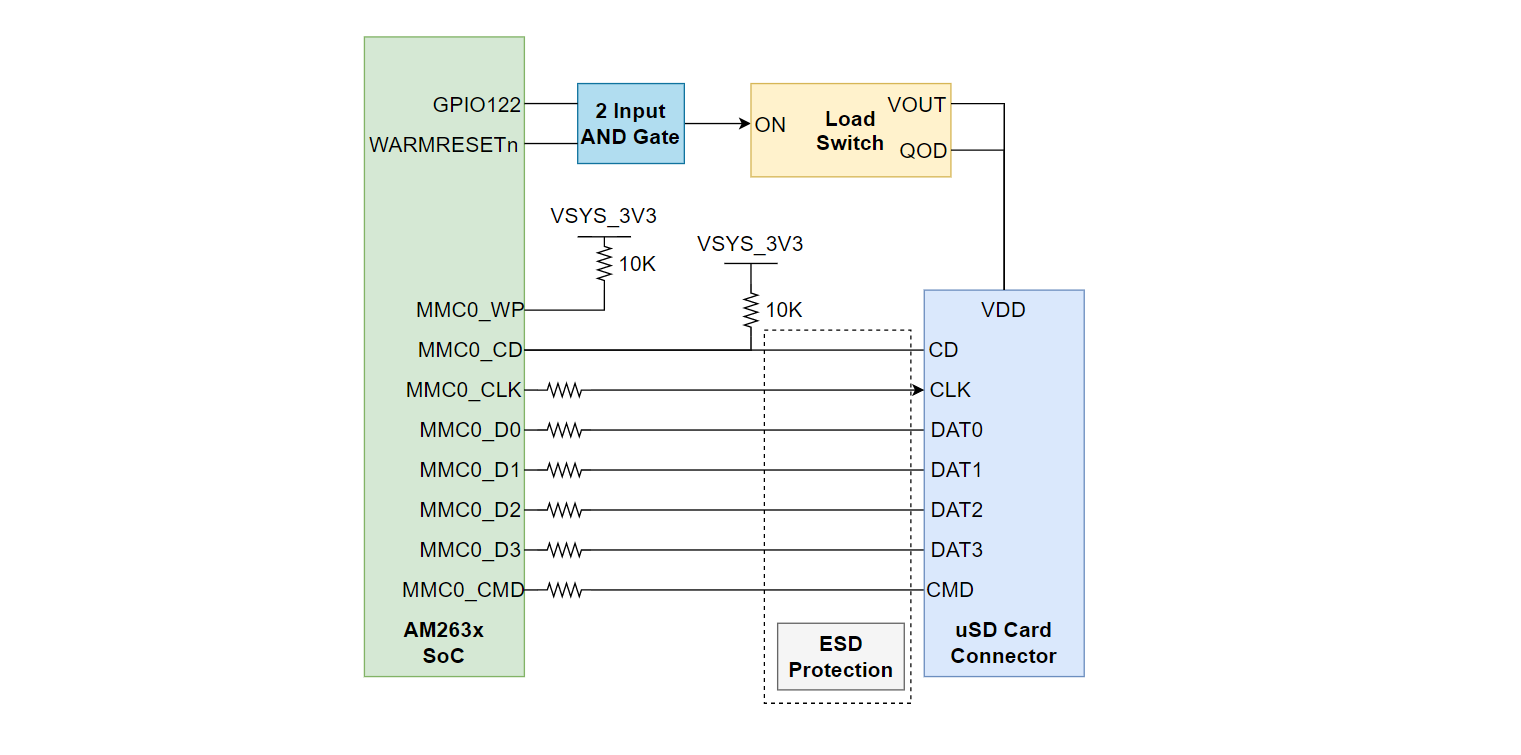SPRUJ10D May 2022 – September 2023
- 1
- Abstract
- Trademarks
- 1Preface: Read This First
- 2Kit Overview
- 3Board Setup
-
4Hardware Description
- 5.1 Functional Block Diagram
- 5.2 GPIO Mapping
- 5.3 Reset
- 5.4 Clock
- 5.5 Memory Interface
- 5.6 Ethernet Interface
- 5.7 I2C
- 5.8 Industrial Application LEDs
- 5.9 SPI
- 5.10 UART
- 5.11 MCAN
- 5.12 FSI
- 5.13 JTAG
- 5.14 Test Automation Header
- 5.15 LIN
- 5.16 MMC
- 5.17 ADC and DAC
- 5.18 EQEP and SDFM
- 5.19 EPWM
- 5.20 BoosterPack Headers
- 5.21 Pinmux Mapping
- 5References
- 6Revision History
4.16 MMC
The AM263x LaunchPad provides a micro SD card interface that is mapped to the MMC0 instance of the AM263x SoC.
 Figure 4-19 Micro SD Card Connector
Figure 4-19 Micro SD Card ConnectorA load switch (TPS22918DBVR) is used to power the micro SD card connector. The load switch is driven by the output of a 2-input AND gate between WARMRESETn and the SD Card enable GPIO (GPIO122) in order to power cycle the card upon reset. The load switch uses quick output discharge (QOD) to ensure that the supply voltage reaches <10% of nominal value during reset.
Inline ESD protection is provided for the MMC signals in the form of a six channel transient voltage suppressor device (TPD6E001RSER) and two channel transient voltage suppressor device (TPD2E001DRLR).
The Write Protect (WP) and Card Detect (CD) signals of the SD card connector are pulled up to the 3.3V System voltage supply.
A series termination resistor is provided for all MMC signals besides CD.